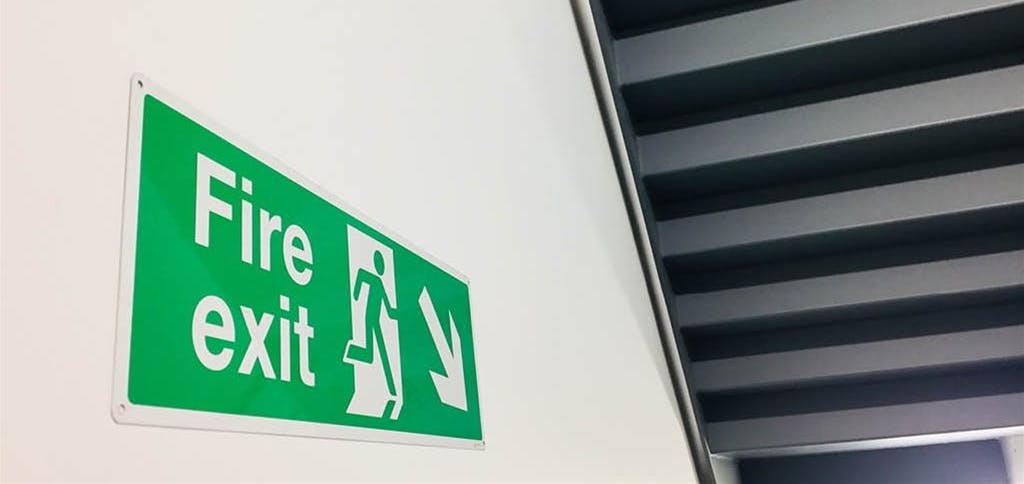According to research by Zurich Municipal, two-thirds of schools in England are not adequately prepared for a fire and there is little consistency in the approach to fire risk management amongst schools. With more than 1,000 fires in school premises every year costing an average of £2.8 million for more significant incidents, not to mention the major disruption to the educational continuity of children, clearly fire protection will feature highly on schools’ health and safety agenda.
But while schools will undoubtedly be aware of the need to address fire protection, the fact that so many fires are still happening poses the question; are mistakes being made? Are risk assessments and their actions fully understood by site managers? And if so, what are the common misunderstandings?
Essential actions
Simply going through the motions of completing a fire risk assessment does not ensure a school is compliant. Key staff need to familiarize themselves with the findings and make a simple, prioritised plan to address the recommendations. Any competent fire risk assessment will include a rating of the risk level and actions will be assigned a priority level. However, there are often lots of practical complexities (such as budgetary logistical considerations) as to why a school cannot simply address the actions in order of ‘high’, ‘medium’ and ‘low’ priority ratings. This leaves schools with a dilemma; How do they become compliant with the budget that is actually available? Are they doing enough? Or are they too risk-averse? A sensible balance needs to be struck and this is where an understanding of a ‘reasonable and proportionate’ response is essential. For example, an assessor will often state ‘recommend doors are inspected and, where not compliant, replaced’. Or another favourite is ‘check and replace all intumescent strips on fire doors’. While this is informed and appropriate advice it must also be considered that many schools have hundreds of doors and at a cost of nearly £2-3k each, it is not reasonable to expect every single one to be ‘perfect’. Similarly, ‘compartmentation and fire stopping’ and following through on recommendations to investigate these areas of the building for fire-rated materials can involve expensive investigations carried out by a building surveyor in order to identify if areas are sufficiently compartmentalised. But is this a reasonable expectation?
The risk assessment may be overwhelming, identifying a plethora of issues that require improvement and which will all contribute to enhanced fire protection, but in reality, how can a school site achieve 100% ‘compliance’ within the budget that is available? The legislation governing health and safety compliance allows for ‘reasonability’. But how can a school interpret what is reasonable in order to make the right decisions and spend money in the right areas to the greatest effect, without the potential of being exposed to unacceptable risk or even prosecution?
Completed works may not equal compliance
Even when improvement works are undertaken, how can a school be confident that they are to the correct specification, without running up further costs to fund another independent risk assessment? School staff may not necessarily be fully conversant with what a robust evidential trail looks like for the completion of these works and so will not know what to ask for.
A risk assessment will provide a comprehensive overview of the site but some of the recommendations will require specialist knowledge to interpret the level of action required. Equally, not all findings can be logistically actioned, so what should the school do to demonstrate a commitment to compliance? Are there any additional control measures that the school should be introducing to mitigate the risk for instance?
Engaging contractors
When addressing the need to undertake any essential remedial works, the school needs to understand the full financial ramifications. But how does the school know what constitutes a fair and reasonable estimate?
In situations where a school provides a contractor with the fire risk assessment and asks for an estimate of the works required, a lot of trust is placed in the contractor. Are they actually helping to identify the essential works whilst also looking after the school budget, as opposed to putting their own interests first? Do they have the necessary knowledge to complete the works that will help with site compliance?
Similarly, without the requisite specialist knowledge, how can a school advise the contractor on what needs to be done and what does not need to be done? And, if after engaging a contractor to undertake specific actions, an inspector deems the school to still be non-compliant, what happens then?
Navigating the school through an improvement programme in response to a fire risk assessment is complex, time-consuming and fraught with the potential for error and poor decisions around spending budgets. Engaging a specialist company that is 100% impartial and independent – i.e., not incentivised by the amount of expenditure on remedial works and always has the school’s best interests at heart - is the solution. Clear Safety can manage the entire programme for a school, from undertaking the fire risk assessment to advice on the works required, collating evidence of all completed work before payments are made and achieving compliance. Alternatively, we can work with an existing risk assessment, engaging with contractors and interpreting the findings on behalf of the school. Clear Safety has the requisite knowledge and extensive experience to help your school achieve compliance, whilst minimising cost!
First published: February 2021



